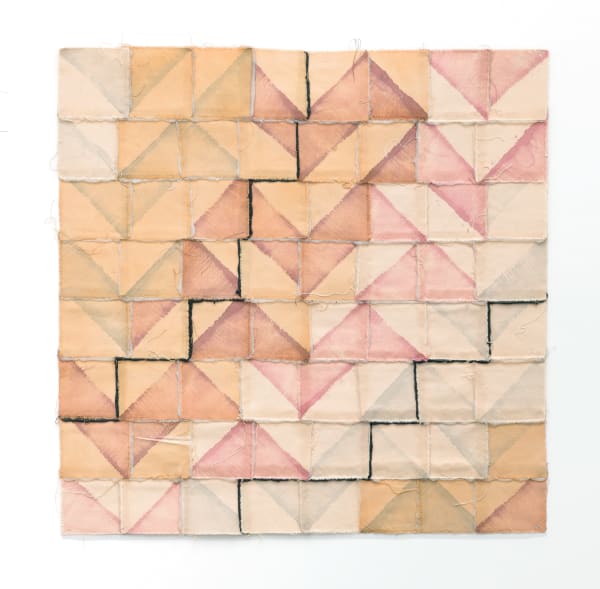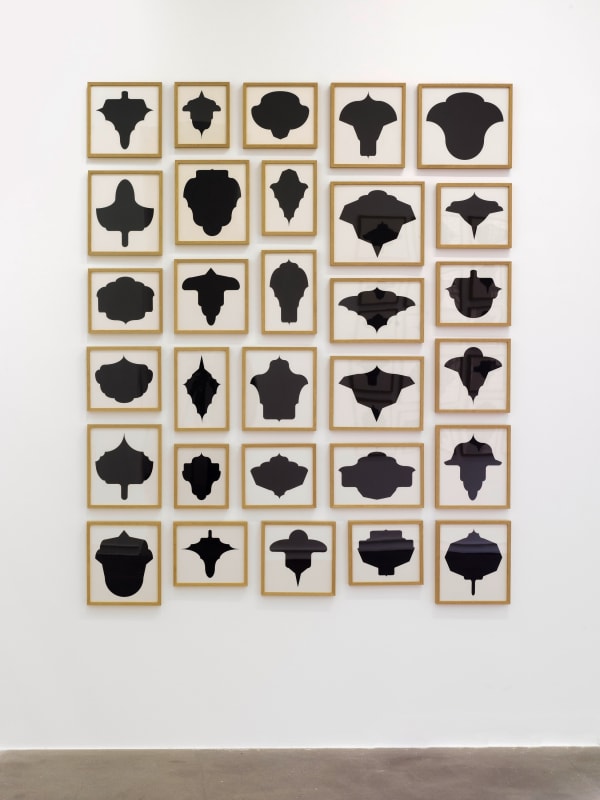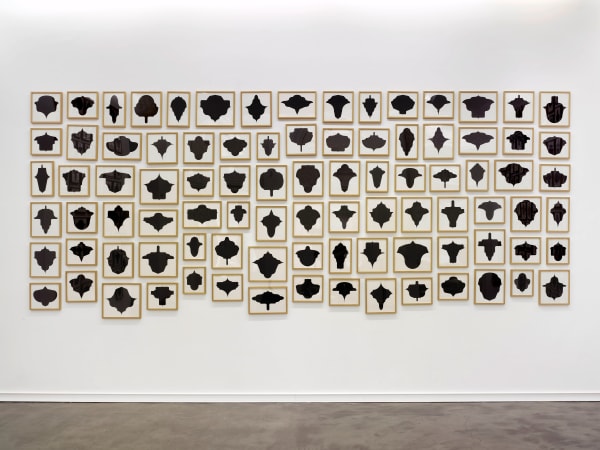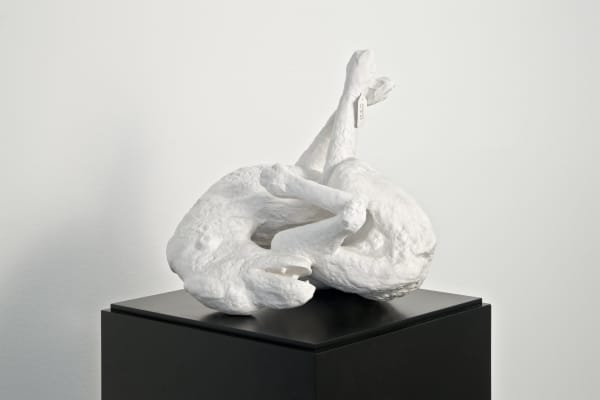-

-

-
“In a world without mass-produced symbolic objects, we would have little need for the contrary concept of the unique artwork. But in our world, we are always working to protect the integrity of the unique against its debasement by the replica, to make defence against the threat of plenitude by retreating into the solace of scarcity. But if we could come to embrace the mechanisms that drive our passions, and understand these along with the passions that animate our machines maybe then we could begin to look for an art which is both repetitive and expressive, both copy and original, both abundant and precious: an art to embody both the horror and the promise of modern life, without shrinking from either.”— Allan McCollum, 1989
-
Until 4 June 2022, Galerie Thomas Schulte presents an exhibition by Allan McCollum with works from the remarkable Constructed Paintings and Bleach Paintings series which are exhibited in the gallery’s main space.
Read more about Allan McCollum. Works 1970-1973 -

-
 allan mccollum, Deep connections, 1973
allan mccollum, Deep connections, 1973 -
 allan mccollum, If Love Had Wings: a Perpetual Canon, 1972
allan mccollum, If Love Had Wings: a Perpetual Canon, 1972 -

Untitled (Bleach Painting), 1970
Canvas, dye, bleach
212.7 × 254 cm | 83 ¾ × 100 in
-
 Installation view at MAMCO Geneva, 2014, Photo: Ilmari Kalkkinen
Installation view at MAMCO Geneva, 2014, Photo: Ilmari Kalkkinen -

-
 Fifty Perfect Vehicles (1989), installation view at Galerie Thomas Schulte, Berlin, 2011
Fifty Perfect Vehicles (1989), installation view at Galerie Thomas Schulte, Berlin, 2011 -
Allan McCollum’s part of the PBS TV series “Art in the Twenty-First Century” (October 2009) begins with his uncle Jon Gnagy’s 1950s television program Learn to Draw. Crediting his uncle’s demonstrations as an early influence, McCollum says “whenever I design a project it’s in my head…that I would be able to show someone else how to do it.”
-

Installation view at Haus Esthers, Krefeld, 1993, Photo: Volker Döhne
-

-
“I think that we all lose out when we all ask our artists to eliminate their feelings about large quantities from their vocabulary of expression just to please a certain exclusive group. And for this reason it’s really important that as artists we should feel free to take a stand on this point by making as many artworks as we want.”—Allan McCollum, 1996
-

-
"It's fascinating and touching that people work so hard to build an imminent meaning into things; that they pursue their desire to produce symbolic objects for themselves to keep, and to exchange with others. In our culture, an artwork is an object of this kind; and whatever specific meaning the artist works to put into it, it will always retain its promise as a gift, its destiny as a keepsake. This is the artwork I am interested in making: an object filled with the absence of certain meaning, and yet rich with the quality of meaningfulness in and of itself.”— Allan McCollum, 1989
-

"Everything is Going to be Ok", exhibition view at Galerie Thomas Schulte, Berlin, 2020
-
Thomas Schulte speaks about Allan McCollum's installation "Everything is Going to be OK" presented in the gallery’s Corner Space, foyer and Window Space from 23 May through 11 July 2020.
-
-

Allan McCollum. Works since 1969
Exhibition at the Institute of Contemporary Art, Miami 26 March 2020 to 17 January 2021ICA Miami presents the first US museum retrospective for American artist Allan McCollum.
-

"Mass-Producing Individual Works"
A Conversation with Allan McCollum by Jade Dellinger in Sculpture Magazine 1 March 2013 -

"Signs of the Imperial Valley: Sand Spikes from Mount Signal"
Essay on Allan McCollum's 2000 project by Jeffrey Kastner in INSITE Journal ISSUE 03, Autumn 2020
-
















![AM 04_003[4]](https://artlogic-res.cloudinary.com/w_600,c_limit,f_auto,fl_lossy,q_auto/ws-galeriethomasschulte/usr/images/feature_panels/images_and_objects/754/01ff8647-20200625-_allan-mccollum-works-since-1969_-at-ica-miami-009.jpg)




















